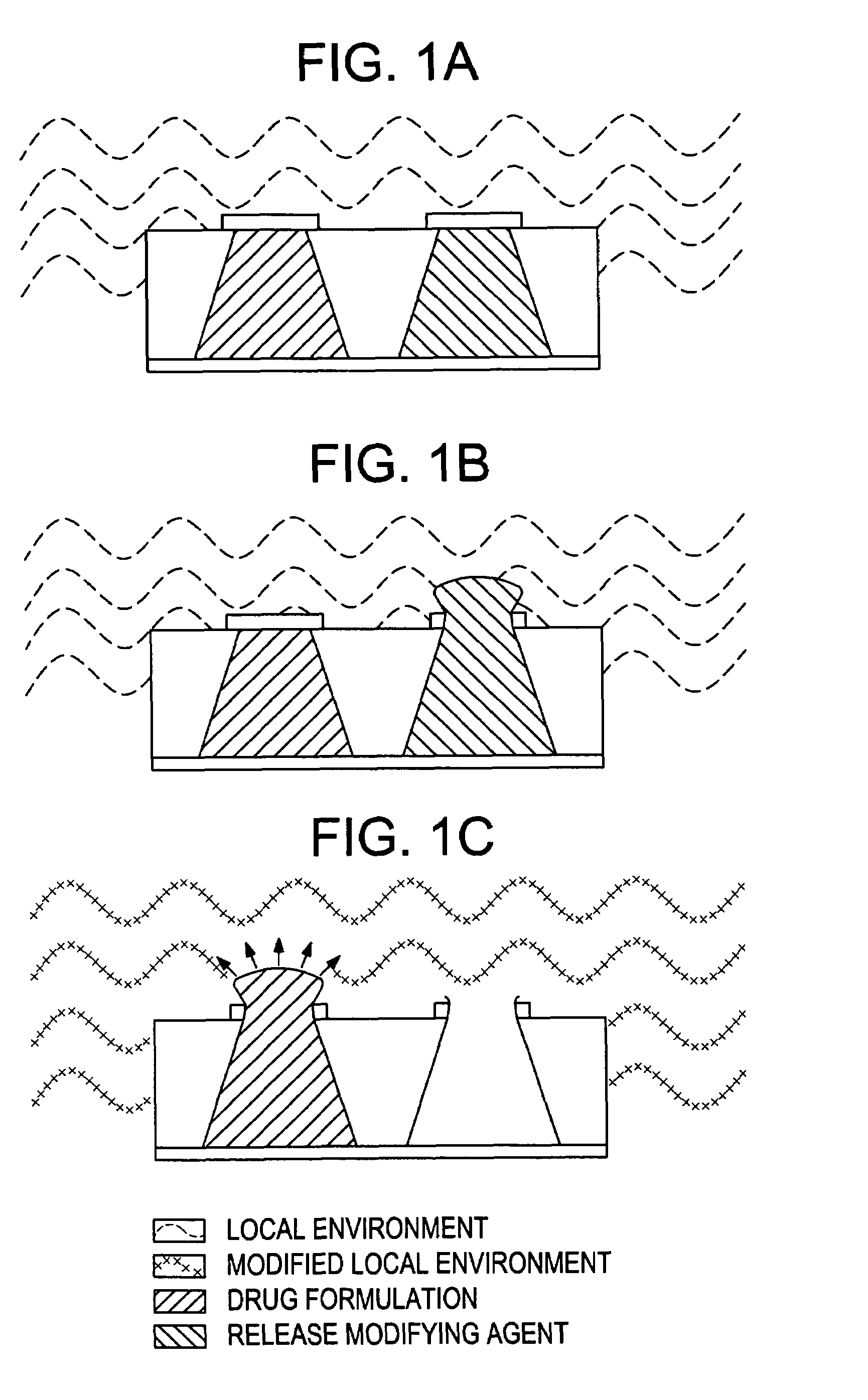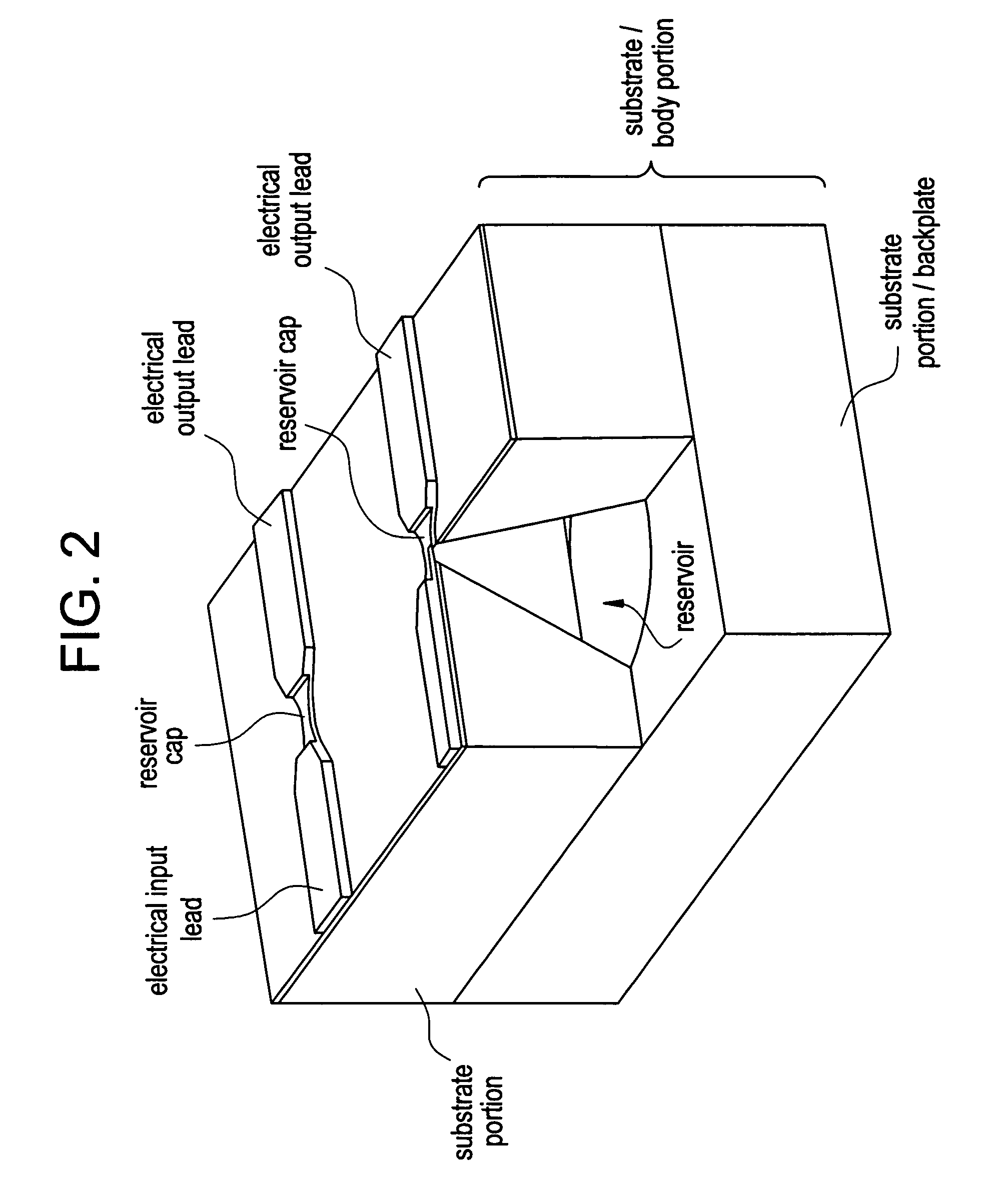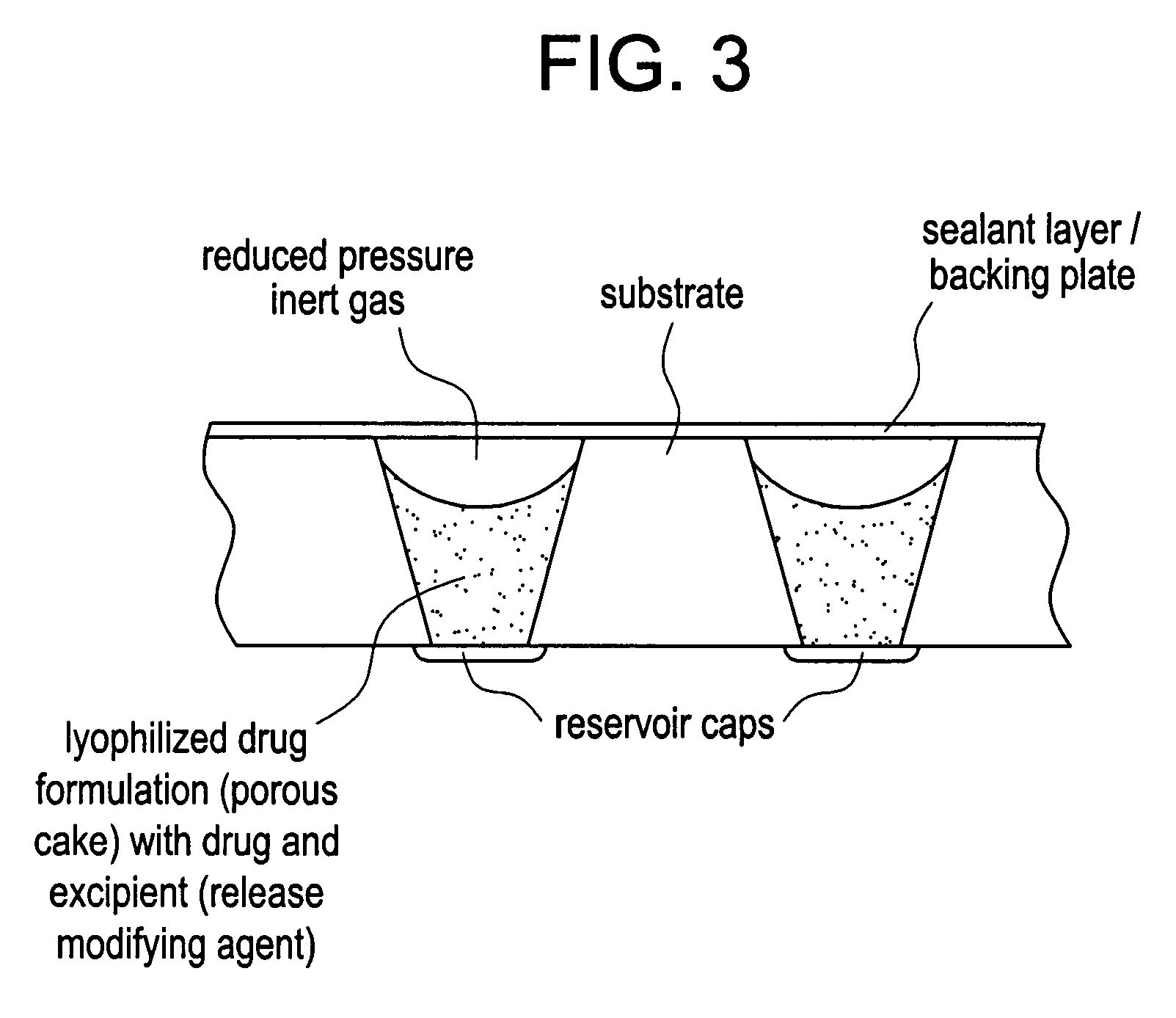Control of drug release by transient modification of local microenvironments
a microenvironment and drug technology, applied in the field of micro-containing/controlled release or exposure devices, can solve the problems of affecting the release of drugs from implantable medical devices, affecting the release of drugs from highly concentrated dosages, and affecting the release of drugs from high-concentration dosages, so as to increase the capillary action and enhance the release of drug formulations
- Summary
- Abstract
- Description
- Claims
- Application Information
AI Technical Summary
Benefits of technology
Problems solved by technology
Method used
Image
Examples
example 1
Enhanced Release of Teriparatide from Reservoir Using with Tartaric Acid / PEG Backfill
[0113]A teriparatide solution was prepared adding 200 mg of teriparatide per milliliter of solution to a 25% acetic acid in water mixture. (The acid concentration is approximate, as it assumes no volumetric contribution of the teriparatide to the solution.) Device / substrate reservoirs were filled using 100-125 nL of the teriparatide solution. The teriparatide was then lyophilized to yield a solid dosage. For concentrated lyophilized dosages, the reservoir was filled with a concentrated drug solution. Then the solution was frozen and lyophilized to form a reservoir-bound porous drug cake.
[0114]The porous teriparatide dosages then were back-filled with one of two excipient formulations, by adding 100-125 nL of polyethylene glycol (PEG) into the reservoirs: In the first case, lyophilized PTH was back-filled with a molten solution of tartaric acid in PEG 1450. In the second case, the lyophilized PTH was...
example 2
Enhanced Dissolution and Recovery of Teriparatide from a Bulk Lyophilized Cake Containing Citric Acid
[0119]Solutions of teriparatide were prepared at room temperature either as a 100 mg of teriparatide per milliliter of a 25% acetic acid solution or as a 200 mg of teriparatide per milliliter of a 50% acetic acid solution. (The acid concentration is approximate, as it assumes no volumetric contribution of the teriparatide to the solution.) The teriparatide concentrations are provided as the equivalent free-base concentrations. The 200 mg / mL teriparatide solution in 25% acetic acid was subsequently diluted to 100 mg / mL teriparatide solution using a 0.4M citric acid solution to yield a solution with a teriparatide concentration of approximately 100 mg / mL, an acetic acid content of approximately 25%, and a citric acid concentration of 0.2M.
[0120]Small aliquots (20 μL) of each solution were dispensed into glass vials, frozen, and lyophilized using a conservative cycle to yield a solid ca...
example 3
Release of Teriparatide from a Micro-reservoir Containing Lyophilized Cake Containing Citric Acid
[0126]The citric acid-containing formulations from Example 2 were dispensed (primary fill) into a device / substrate reservoirs at a volume of 200 nL per reservoir, then frozen, and then lyophilized. The % recovery in 24 hours and time to 50% release were monitored using a custom in vitro flow cell system which allows for discreet reservoirs (in this case a set of 4) to be exposed to a phosphate buffered saline (PBS) solution at 37° C. (here, a solution of 10 mM sodium phosphate, 140 mM sodium chloride, 2.7 mM potassium chloride, pH 7.4, 0.004% Tween 20). Fractions of the PBS solution were collected over time, and the teriparatide collected in each fraction was quantified for evaluation as a function of time.
[0127]As shown in Table 3, the inclusion of the citric acid in the primary fill formulation increases the total teriparatide recovery in 24 hours in neutral buffer conditions and great...
PUM
| Property | Measurement | Unit |
|---|---|---|
| volume | aaaaa | aaaaa |
| volume | aaaaa | aaaaa |
| volume | aaaaa | aaaaa |
Abstract
Description
Claims
Application Information
 Login to View More
Login to View More - R&D
- Intellectual Property
- Life Sciences
- Materials
- Tech Scout
- Unparalleled Data Quality
- Higher Quality Content
- 60% Fewer Hallucinations
Browse by: Latest US Patents, China's latest patents, Technical Efficacy Thesaurus, Application Domain, Technology Topic, Popular Technical Reports.
© 2025 PatSnap. All rights reserved.Legal|Privacy policy|Modern Slavery Act Transparency Statement|Sitemap|About US| Contact US: help@patsnap.com



